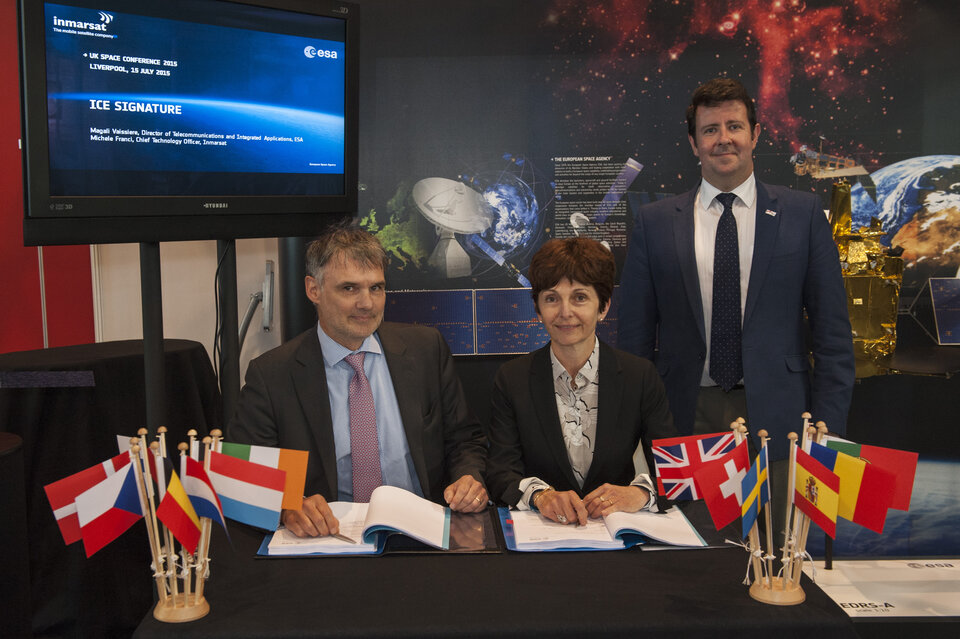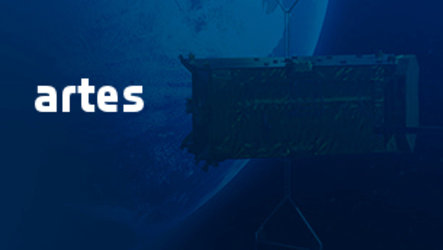ICE: a hot topic for satcoms
ESA’s latest public–private partnership, ICE, gives European industry the opportunity to shape future mobile satellite services on land, at sea and in the air.
Today at the UK Space Conference, ESA signed a contract with Inmarsat to support the Inmarsat Communications Evolution project, ICE.
ICE offers industry an opportunity to propose innovative technologies and approaches that will improve and expand the communication capabilities and market reach of Inmarsat`s current and future generation of Ka-band and L-band satellite systems, and its associated products and services.
The project has two aims. The first is to define the system and identify technologies. The second, starting in 2017, is to develop and implement the satcom approach addressing user applications and services through to ground and space infrastructure.
The innovations will include improvements in optical communications that will provide high-speed links for interconnecting orbital, ground and aeronautical assets.
ICE will expand the future range of mobile satellite services. An open architecture with standardised interfaces will ensure an easy entry point for application developers that will stimulate new products and services.
Inmarsat, a global mobile satellite communications provider based in the UK, is leading the end-to-end system design work with support from Airbus in the UK, France and Italy. Ruag in Switzerland will lead the design of optical technologies.

The contract was signed by Magali Vaissiere, ESA’s Director of Telecommunications and Integrated Applications, and Michele Franci, Chief Technical Officer at Inmarsat.
“ESA’s partnership with Inmarsat in the ICE project will empower European industry to develop new technologies, products, applications and services that will shape the future of mobile satellite services,” commented Mrs Vaissiere.
“While the initial study is a relatively small-scale project,” added Mr Franci, “it represents an ambitious goal: to extend the benefits of satellite communications to a broader customer base and to significantly increase the range of services and applications available, from connected transport systems to the monitoring of national and international energy infrastructures, to name just a few.”
For further information, please contact:
Margherita Buoso
ESA Communication Officer for Telecommunications and Integrated Applications
Tel: +44 1235 444 293
Mob: +44 7557 503578
Email: margherita.buoso@esa.int





